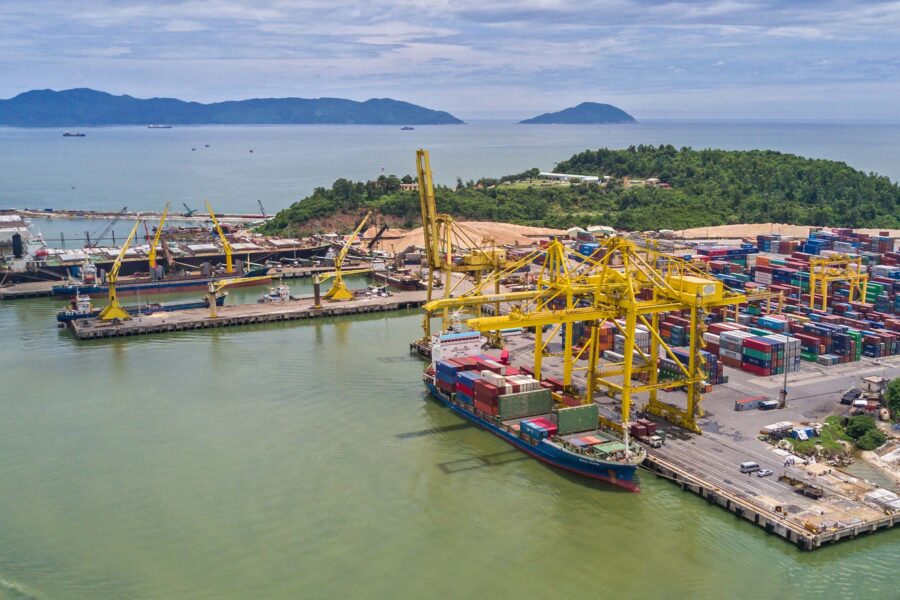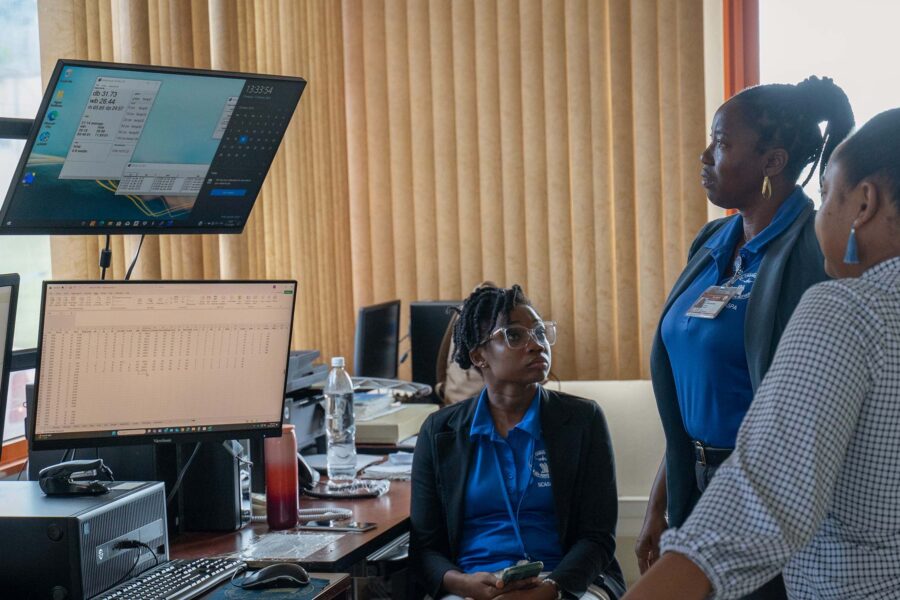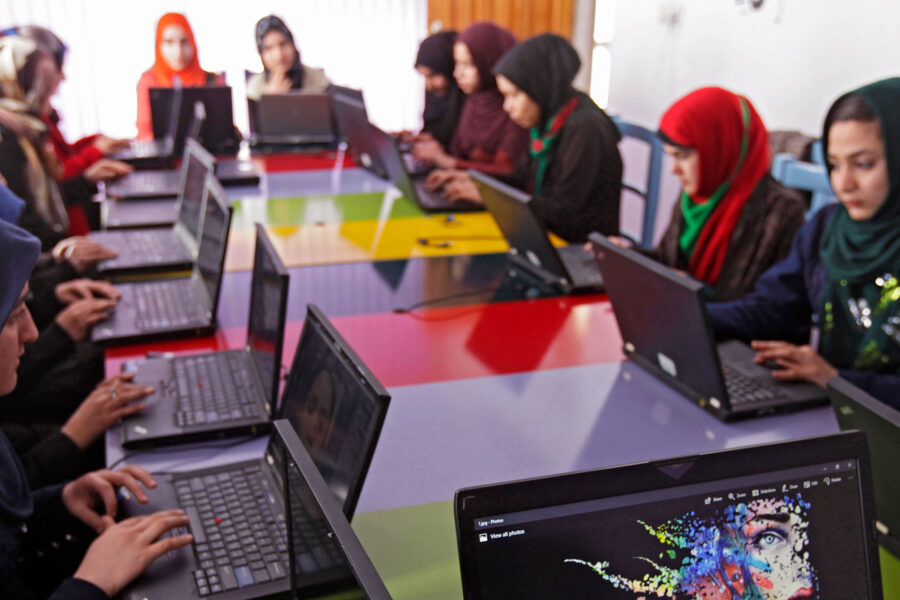From landlocked to land-linked: opening opportunities for LLDCs
Landlocked developing countries face unique development challenges, from high trade transportation costs to reliance on neighbors’ infrastructure. A new cooperation strategy implemented in four West African countries could serve as a development blueprint for other regions
Economic development — Global, Sub-Saharan Africa

In 2014, the global community recognized the unique development needs of landlocked developing countries (LLDCs) by adopting the Vienna Programme of Action (VPoA), a 10-year plan to promote their sustainable development. The VPoA has been an essential part of the 2030 Agenda, supporting LLDCs in reaching inclusive and sustainable growth while eradicating poverty. Cooperation and collaboration between development partners, transit countries, and LLDCs are key to delivering the VPoA and achieving the Sustainable Development Goals.
The 2019 High-level Midterm Review of the VPoA Implementation raised a call for action to accelerate its implementation in light of the persistent shortcomings and difficulties LLDCs face. It also urged LLDCs and transit countries to:
- consider promoting a corridor approach to improve trade and transit transport
- make additional efforts to reduce travel time along the corridors
- adopt an integrated and sustainable approach to the management of international transport corridors to avoid duplication of effort
This is essential to support work to promote regional connectivity and maximize the associated economic opportunities.
The United Nations Conference on Trade and Development (UNCTAD) has been at the forefront of advocating for a new generation of policies and comprehensive approaches to achieve inclusive growth and sustainable development in LLDCs. Such policies are urgently needed because past and present “commodity-driven growth models” have failed to deliver promises of decent jobs and poverty reduction in these countries. Drawing inspiration from global frameworks in support of LLDCs, including the VPoA, UNCTAD support translates these goals into targeted technical assistance with a tangible impact at country and regional levels.
Closing key development gaps in West African LLDCs
A recent important example of innovative development cooperation for landlocked countries is the implementation of a sub-regional project on the facilitation of transit transport and trade in West Africa for better value chain participation. This approach brought together four least developed countries (LDCs, of which two are LLDCs and two are transit neighboring countries) to implement a corridor approach to improve trade and transit transport in the region. The road corridors connecting the seaports of Lomé (Togo) and Cotonou (Benin) are essential for reaching the inland countries of Burkina Faso and Niger.
These four LDCs have long faced similar trade and development obstacles to their economic growth, including transit, transport, and trade facilitation bottlenecks along key road corridors. This has been influenced by a lack of domestic, economy-wide productive capacities. Perhaps unsurprisingly, the LLDCs’ performance on the Productive Capacities Index (PCI) is among the lowest overall. Indeed, the average score of LLDCs as a group is far below that of other developing countries in all categories, except natural capital. In part, this reflects their continuing dependence on commodities. Of particular importance has been the decline in transit-related productive capacities in the four countries (see Figure 1).
Figure 1: Transport-related productive capacities have declined in West African least developed countries

Source: UNCTAD
Typically, LLDCs’ challenges are exacerbated by their reliance on other nations for international trade and transit. They must comply with decisions made by transit nations regarding the cost of crossing borders and utilizing their port or road infrastructure. These challenges pose considerable obstacles to creating prosperity through trade and integrating them into global value chains. Yet, despite the challenges, landlocked nations, when guided by targeted strategies and regulations, have huge potential to leverage their connectivity. In this regard, regional or cross border infrastructure can play an important part in facilitating their beneficial integration into regional and global value chains in sectors where they have comparative advantages.
LLDCs also rely heavily on multimodal transport linkages, which can be costly and time-consuming. Goods arriving at seaports in transit countries must reach their landlocked destinations via inland, often road, corridors. Moreover, weak transit–transport infrastructure and inefficient customs processes add time and costs for traders. Landlocked nations face three important transit–transport delays:
- longer wait times in ports
- corridor delays
- increased dwell time inland
Indeed, landlocked nations must pay high import and export costs, owing to heavy administrative burdens, as well as weak institutional and regulatory frameworks. These costs are among the key binding constraints to the competitiveness of firms, particularly small and medium-sized enterprises. Solutions, therefore, must go beyond single-country policies in favor of coordinated, multi-stakeholder, cooperative agreements.
Addressing transit–transport issues from a new angle
While the very building blocks of transit and transportation are corridors such as roads, UNCTAD’s recent approach to smoothing development challenges has taken a novel approach. Leveraging the signature of a quadrilateral declaration by the ministers of commerce and transport of the four West African nations mentioned above, we have established a roadmap for realizing their shared vision of converging the regulatory framework for road transport and transit. Operationalizing this shared vision will require reinforced trade integration at the sub-regional level. Therefore, UNCTAD’s program has focused on building institutional capacity and regulatory cooperation to address these complex challenges.
This approach has helped to foster an enabling environment to simplify customs and border regulations along the Lomé–Ouagadougou and Cotonou–Niamey corridors and improve competitiveness. It has also heightened the coordination of cross-border land transport, transit, and trade facilitation operations. It has identified bottlenecks and proposed actions plans for a more seamless and efficient border-crossing, contributing to economic resilience. Moreover, international cooperation in implementing the World Trade Organization’s Trade Facilitation Agreement has been strengthened. The agreement seeks to improve legislation and regulatory practices, harmonizing steps and reducing operational and logistics costs while aligning with international standards. With an emphasis on capacity-building to enhance local stakeholders’ skills, knowledge, and institutional capacities, transit and transport working groups were established within the four countries’ National Trade Facilitation Committees, enabling them to take ownership of development processes and drive change.
An eye toward future development in LLDCs
Due to their specific features and situations, effective and enhanced partnership is a key solution to addressing the challenges of LLDCs. In this sense, the unique approach to development cooperation as applied in West Africa can serve as a model for others. There is a shared responsibility for this partnership among the three key stakeholders: LLDCs, transit neighbors, and the international community, including the United Nations system.
Specifically, there is a need for LLDCs to formulate and implement holistic programs and build productive capacities. Such programs should aim at building economy-wide, national productive capacities, accelerating economic and export diversification and advancing structural transformation. This will help to achieve the objectives of national and global targets to ensure inclusive and sustainable development. UNCTAD hopes that the Third UN Conference on LLDCs, hopefully to take place in late 2024, will provide unique opportunities to reverse LLDCs’ continued marginalization in global trade, investment, and output.





